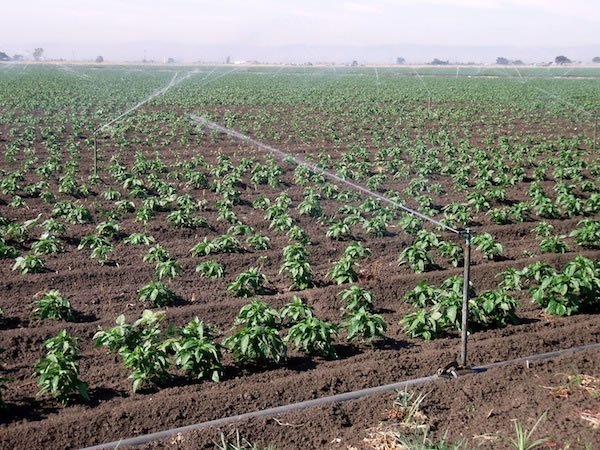California Prop 37 Puts Central Valley In The Spotlight


California Prop 37 puts Central Valley in the spotlight, as the region is largely a concentration of the state's $37.5 billion agriculture industry. Although it makes up a large part of California's economy, Central Valley suffers from multiple obstacles. Poverty, exhausted resources, pollution, unemployment, and a large immigrant workforce are only a few of the unresolved conflicts that sustain this 450 mile stretch of land. If Prop. 37, which would require additional labeling for genetically engineered foods, passes this November, it may leave lasting impressions on the region.
According to Secretary of State Debra Bowen’s website, Yes on 37 has received a total of over $5.5 million in contributions, while the No on 37 has raised a total exceeding $34 million. High Country News has charted the top 10 contributing companies to the "no" campaign. With the exception of all but 1 company, each belongs to the Grocery Manufactures Association, who have prioritized Prop. 37's defeat as "the single-highest priority for GMA this year." According to MapLight.org, Monsanto, an agricultural biotech company, is ranked #1 by contributing $7.1 million.
Since 1992, Monsanto has lobbied the FDA against the labeling of genetically modified foods. Because this procedure is still relatively young (18 years-old), studies have not concluded whether GMOs are as safe as they were lobbied to be. According to the Center for Food Safety:
"Currently, up to 85 percent of U.S. corn is genetically engineered, as are 91 percent of soybeans and 88 percent of cotton (cottonseed oil is often used in food products). According to industry, up to 95% of sugar beets are now GE. It has been estimated that upwards of 70 percent of processed foods on supermarket shelves–from soda to soup, crackers to condiments–contain genetically engineered ingredients."
The Central Valley produces an assortment of over 400 commodities. Fresno County alone provides 350 kinds of crops, which in combination with livestock, generate more than $5.6 billion. Despite the agricultural wealth, Fresno ranks 2nd in the country in number of residents living in poverty. Bakersfield and Modesto, also within the Central Valley, rank 4th and 5th, respectively.
Last month the Huffington Post quoted Caroline Farrell, the executive director of the Center on Race, Poverty, and the Environment as saying:
"It's a pretty ag-heavy region, so the inequality of wages and the opportunity to earn better wages is really skewed... If you own a farm, you're apt to earn more wealth, while if you're a farmworker, don't earn very much."
Poverty is just one issue among many that hinder the Central Valley. Between 2000 and 2010, Fresno (like many Central Valley cities) experienced a rapid influx of residents. "The Valley's growth was fueled by a soaring Hispanic population," reported the Fresno Bee. Instead of boosting the economy's growth, many new residents migrated and were met with unemployment or low wage employment. Over the 10 year span, Fresno's population increased by 16 percent, and Bakersfield underwent a 40 percent increase. Due to this steadily rising population, Central Valley residents and lawmakers will need to develop plans in order to combat the growing grocery list of health hazards.
This past July, Governor Brown and federal officials adjusted the Bay Delta Conservation Plan in an attempt to redistribute water from the Sacramento River to the southern part of the state. The US Department of the Interior states:
"The revised approach, which is grounded in science, is designed to help restore fish populations, protect water quality, and improve the reliability of water supplies for all water users who receive deliveries from state and federal projects."
Those who live within the northern Central Valley are less than optimistic, displaying the familiar sentiment that their water is being "stolen." In August, the NY Times reported:
"Much of the delta is classified as prime farmland and produced about $800 million in agricultural products in 2009, but the output is dwarfed by counties to the south, whose agricultural production totaled about $25 billion."
Whether this decision will truly resolve the state's water shortage, or if it is solely profit-driven, the Central Valley has plenty to pay attention to. "Whether you’re in Modesto or Montpelier, there’s a good chance that the produce you’re eating came from the Valley," wrote Mark Bittman for the New York Times. Prop. 37 just may turn the spotlight on food politics within the Central Valley and beyond.



